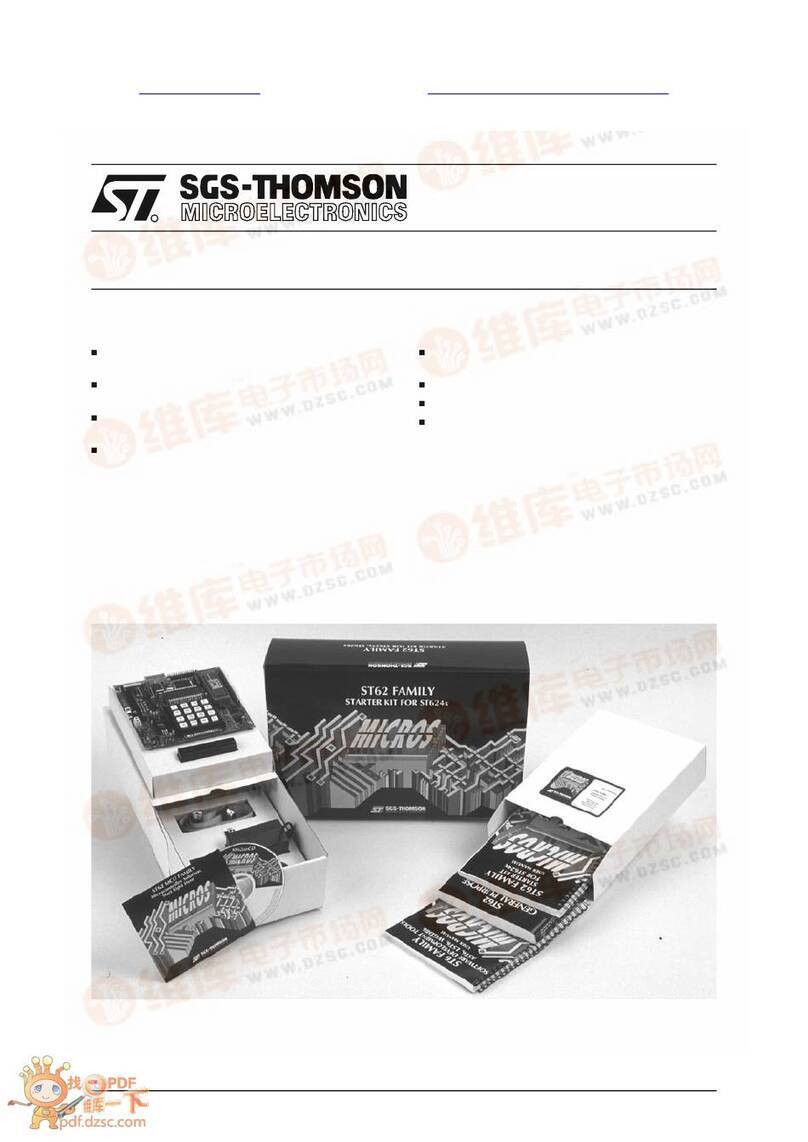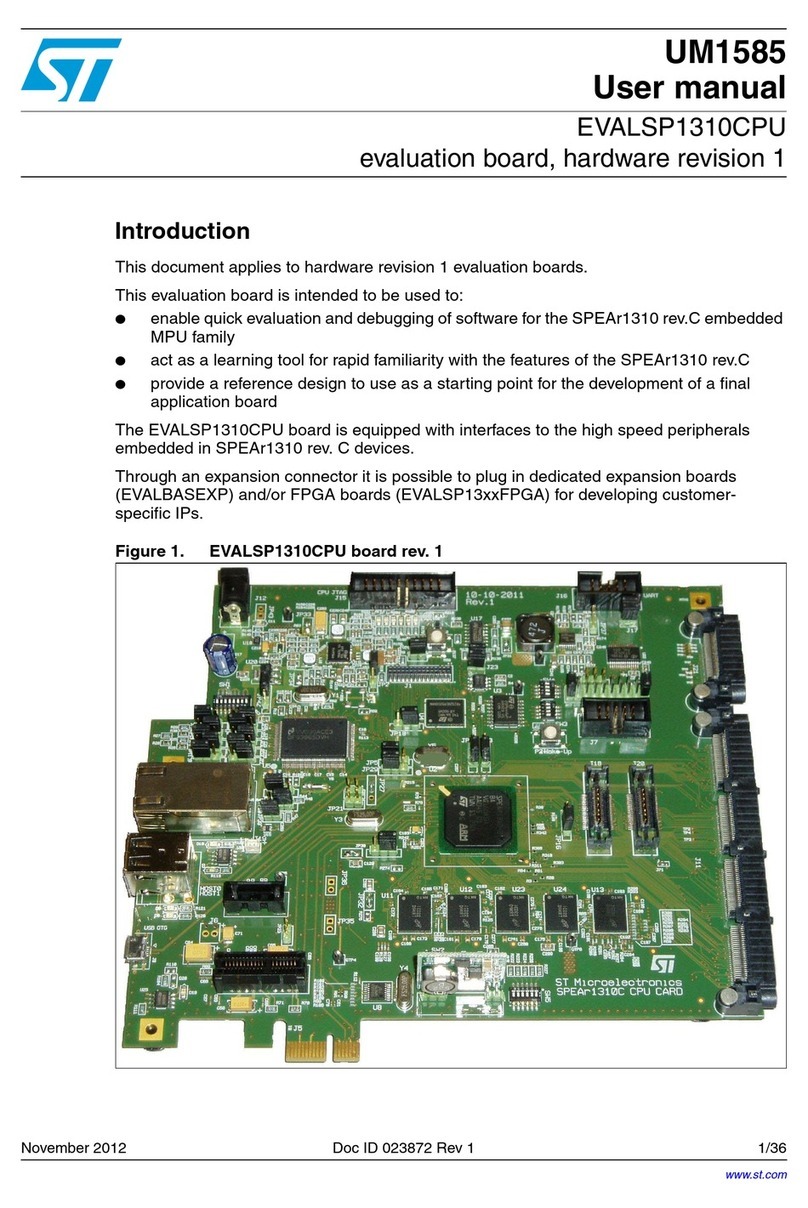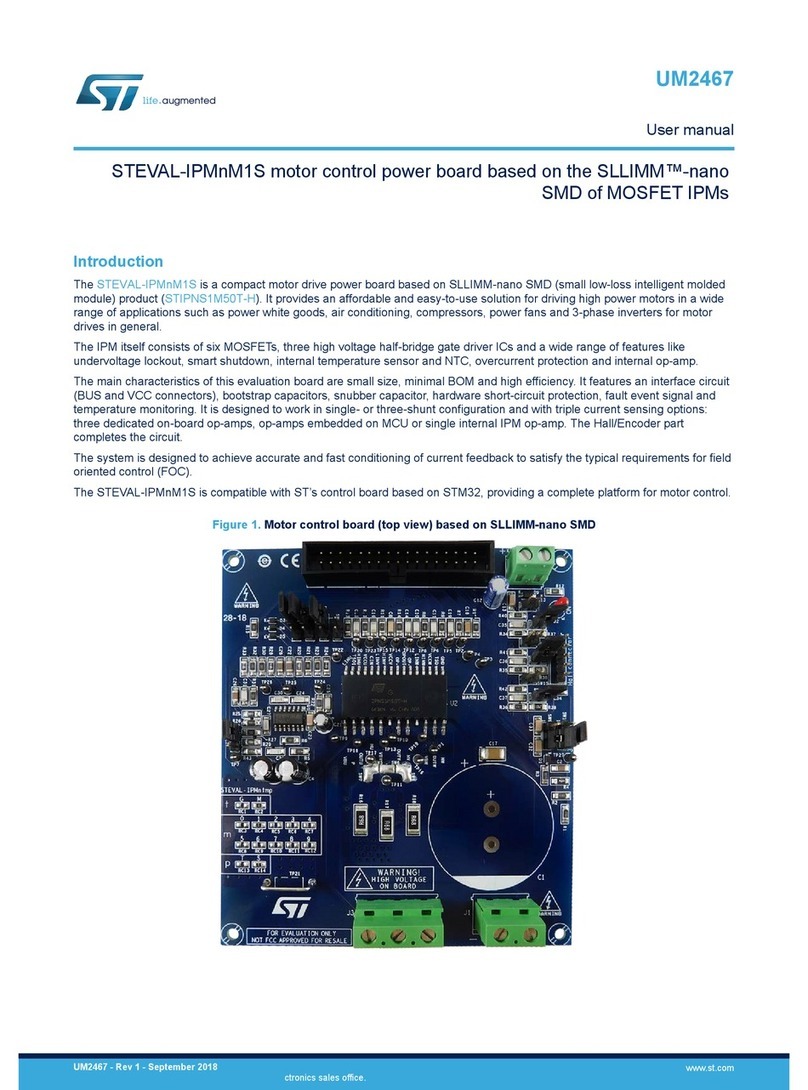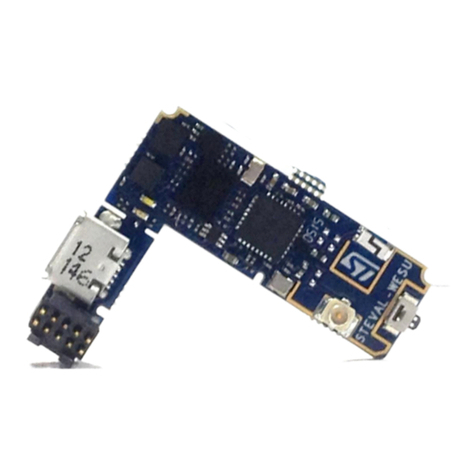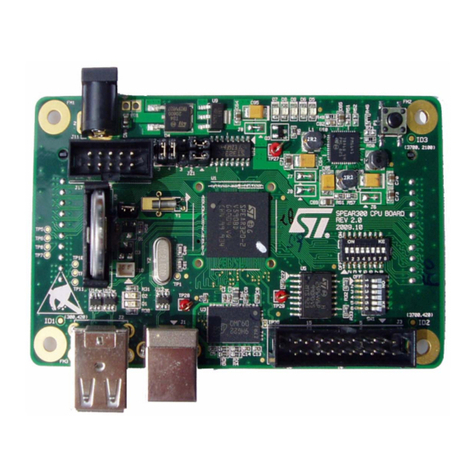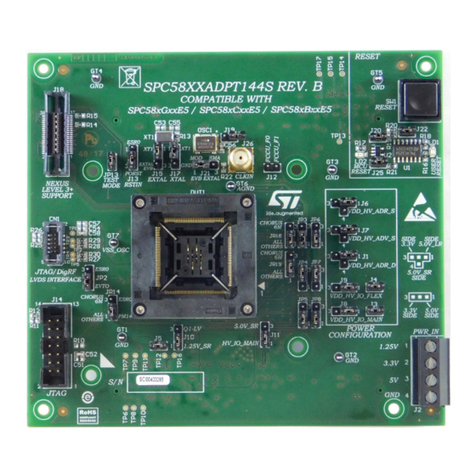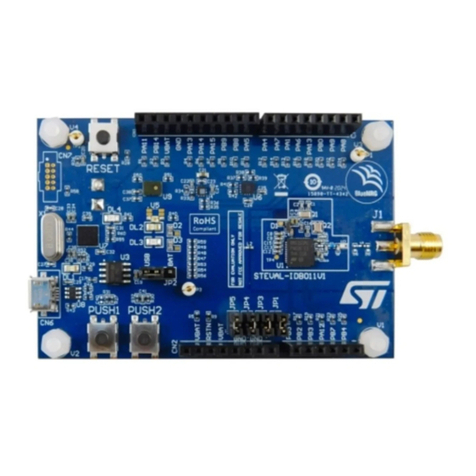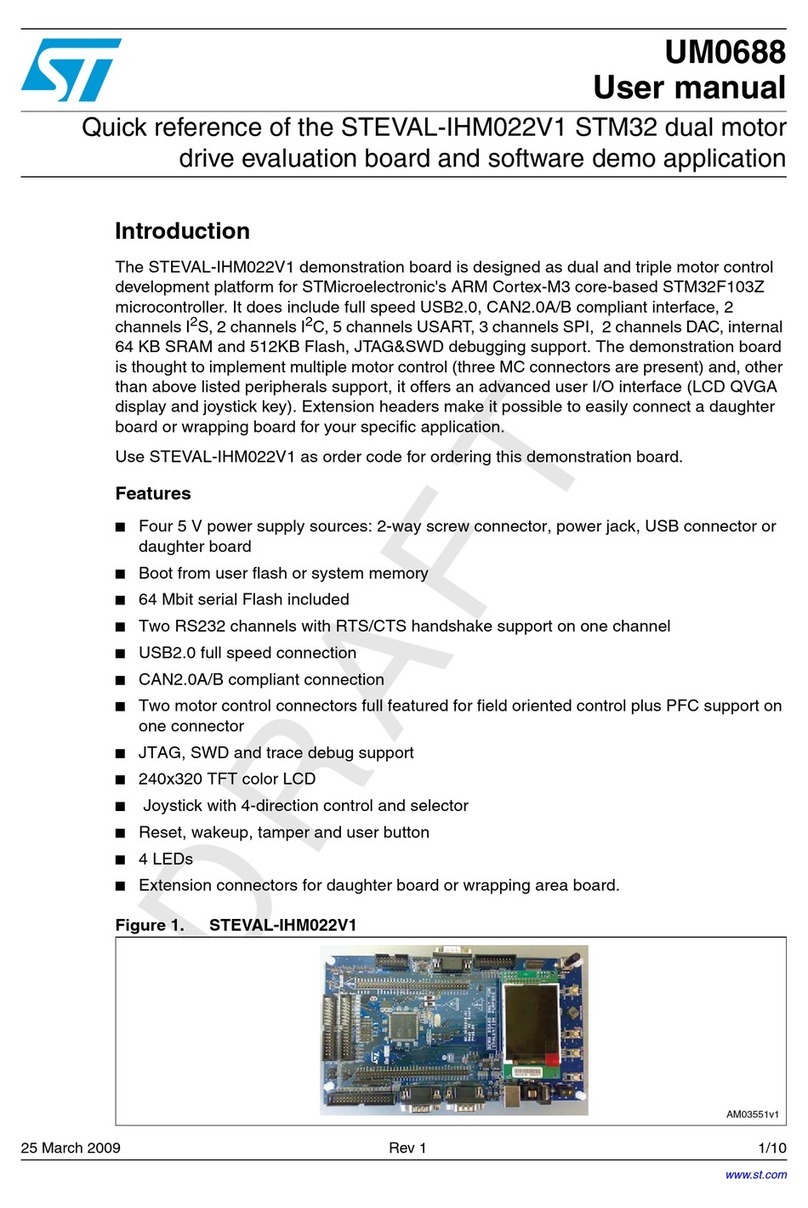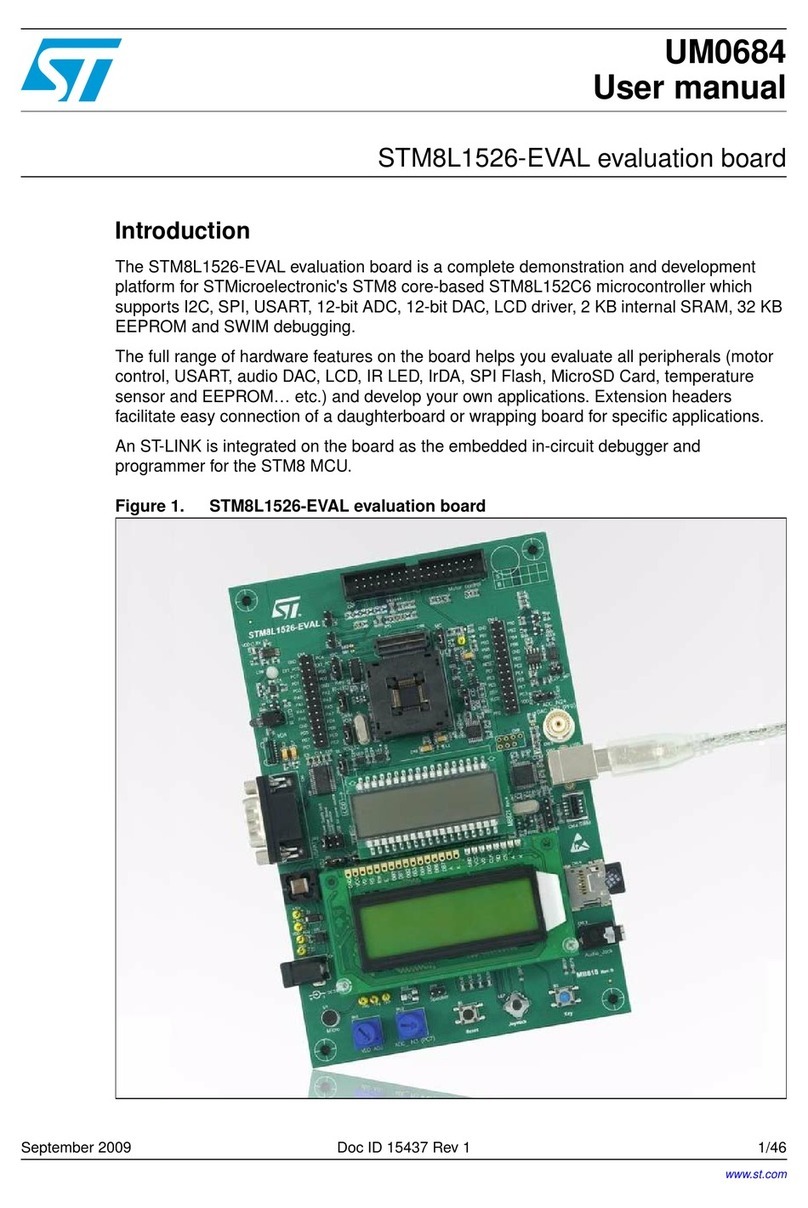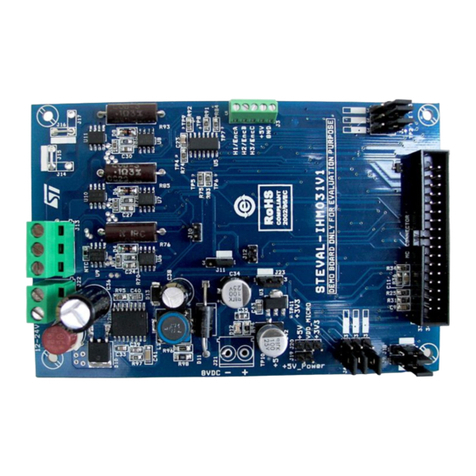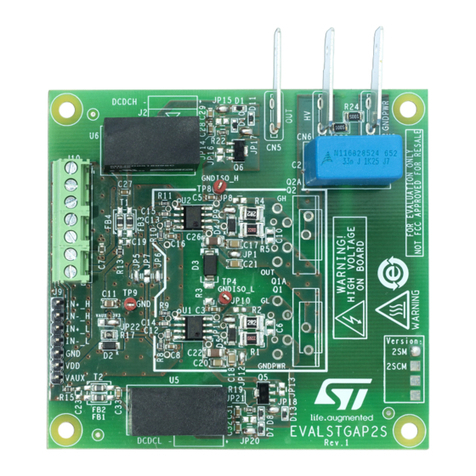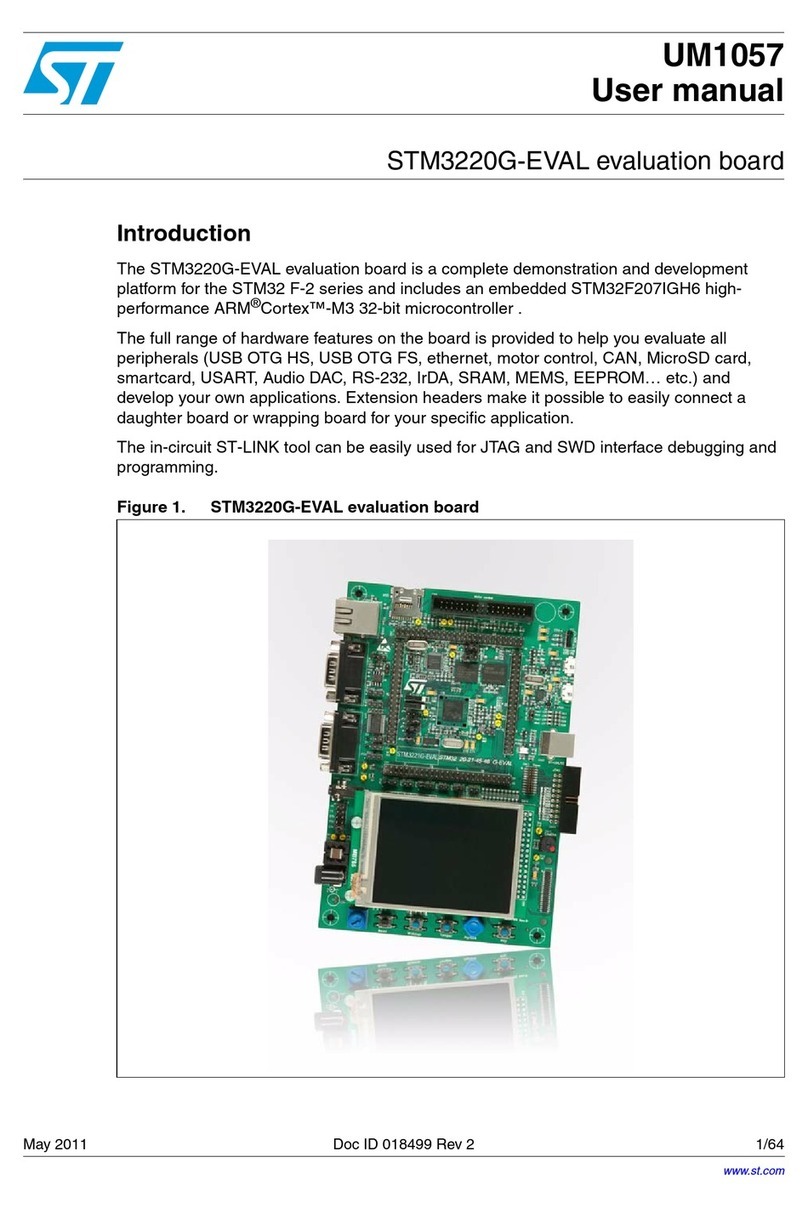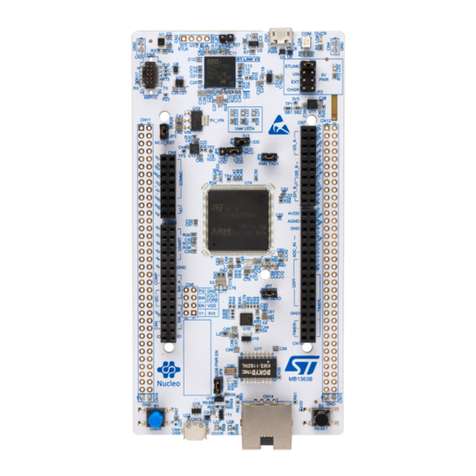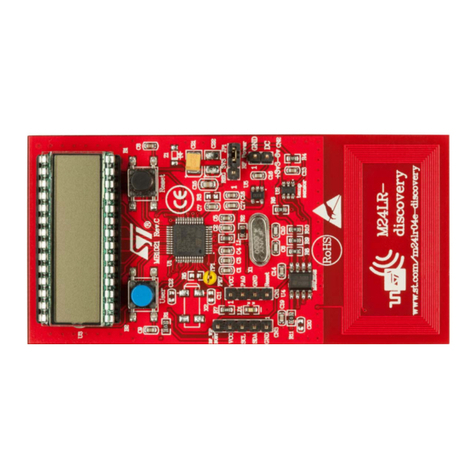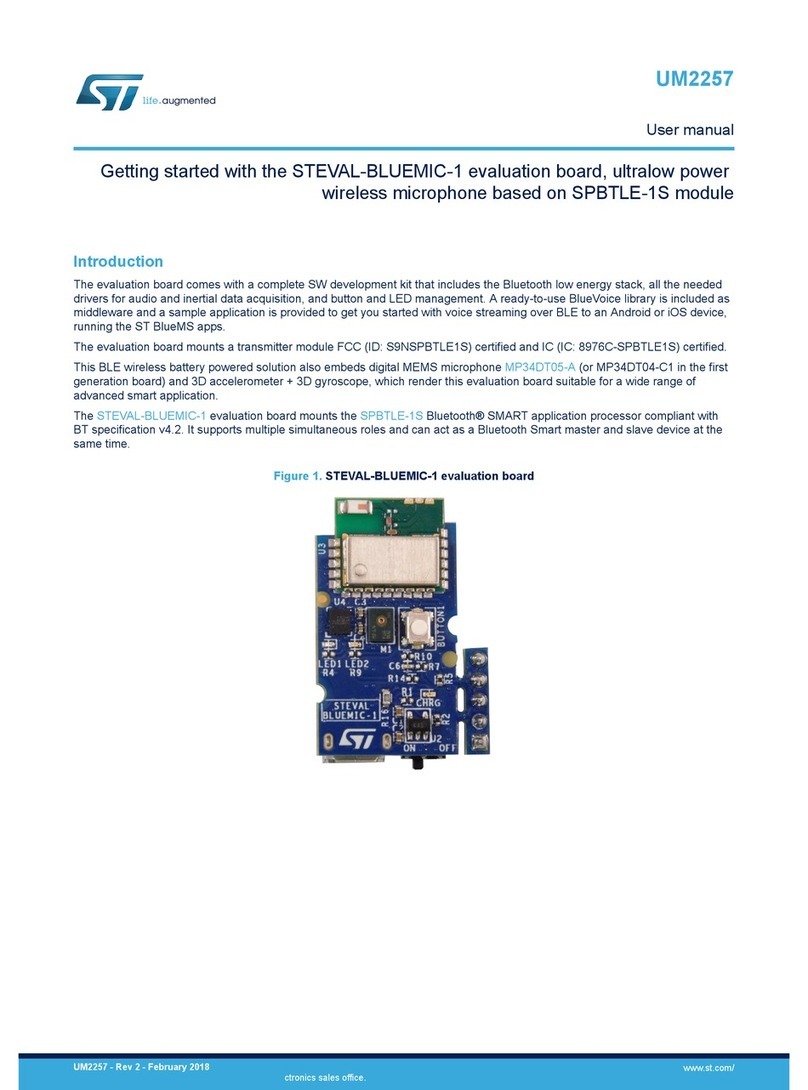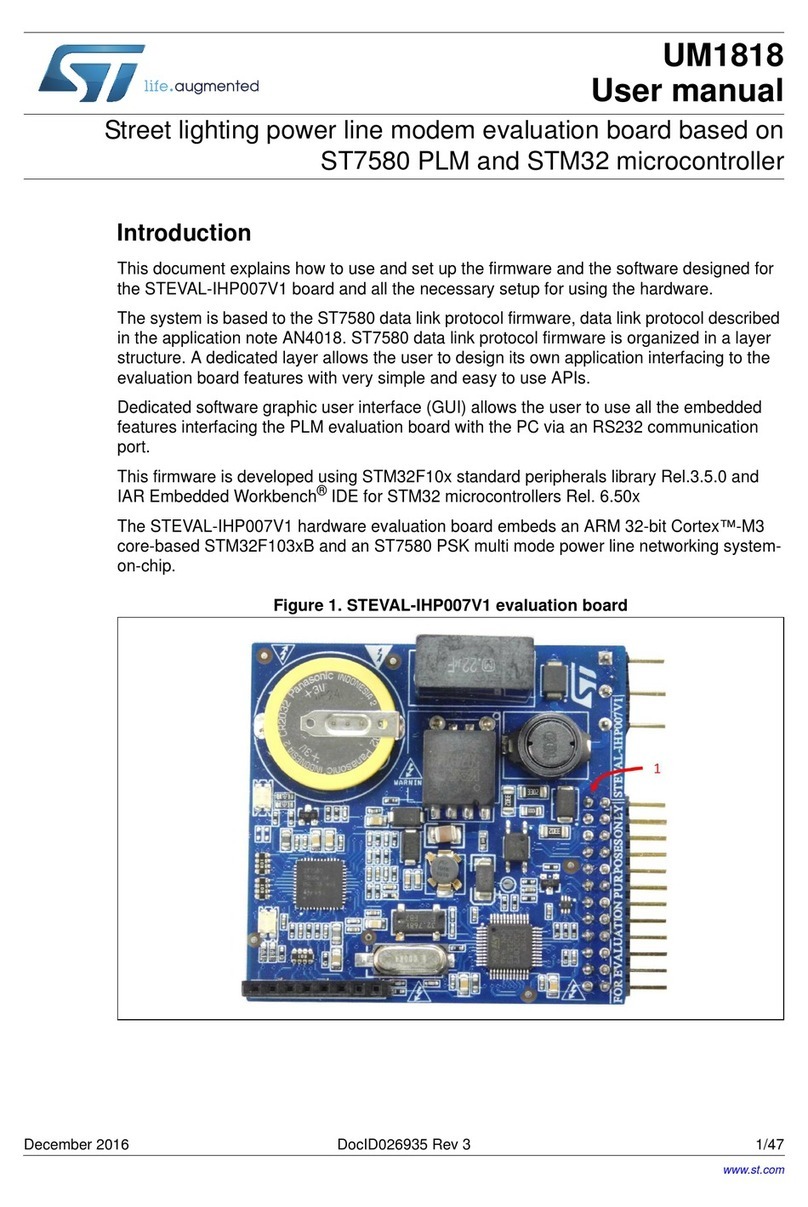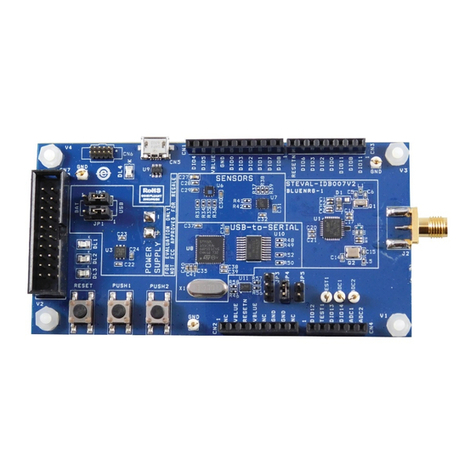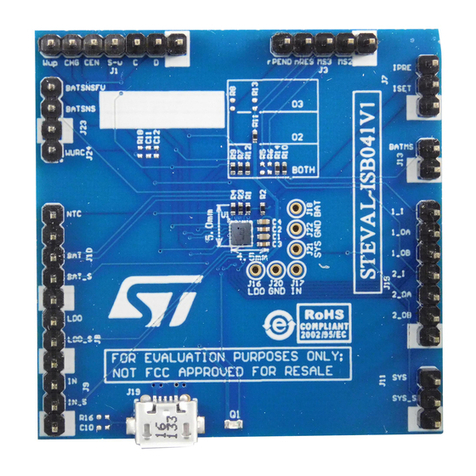
Introduction
This document describes the EVAL-IBD002-35W demonstration board behavior, designed to manage a dimmable 35 W LED
load with a single inverse buck stage.
The HVLED002 controller manages the inverse buck circuit mainly composed by D1, L1 and Q1 components. This circuit
provides around 700 mA as maximum LED load current. The board operates in peak current mode with FOT (Fixed Off Time)
and it has been designed to operate with wide input (48 V - 60 V) and wide output (24 V - 48 V) voltages. The on-time changes
according to the operating condition to keep output current regulated and the switching frequency is consequently adapted.
In steady-state condition the pin COMP works at its maximum value because the FB signal is zero, providing the maximum
average current.. In this condition, decreasing VDimm input below 10 V, the Analog dimming circuit injects an ever higher offset
signal on HVLED002 current sense, so decreasing the output average current. When VDimm input voltage decreases under 2
V, the PWM Dimming circuit starts to generate a PWM output voltage with 5 V - 0 V amplitude. When PWM state is 0 V the FB
signal is zero providing the maximum average current and when the PWM state is 5 V the pin FB is pulled up to VREF and the
switching activity of HVLED002 is stopped providing zero output current. In this way, when the Vdimm is under 2 V, the output
average current increases/decreases depending on the PWM state condition. . Decreasing VDimm voltage level, the PWM high
level percentage increases, further decreasing the output average current too. So, the external 0 -10 V dimming signal is
dedicated to managing a dimmed output LED current between 1%-100% of its maximum value with both Analog control
100%÷10% (10 V÷2 V) and PWM control 10%÷1% (2 V÷0 V).
An external 15 Vdc of auxiliary voltage is needed to power up the HVLED002 controller while the D6, Q3 and U2 components
regulate a precise 12 V to the Vcc of HVLED002 and manage a constant pull-up voltage used for both dimming circuits.
The short-circuit protection is guaranteed by Zener diode D10 which detects a sudden fast slope rise of LED load Cathode
Voltage activating Q6 MOSFET and bringing the pin FB high and stopping the switching activity. On the PCB there are also
available (not mounted) the Discharge and OVP circuit positions, usable and useful with a primary stage connection (converter):
the first needed to discharge the C2 output capacitance after power turn-off and the second to stop the primary activity when an
Overvoltage occurs on the Output LED load.
Inverse buck 35W with LED current controlled by HVLED002 with Analog/PWM
dimming regulation
UM2683
User manual
UM2683 - Rev 1 - August 2020
For further information contact your local STMicroelectronics sales office.
www.st.com
